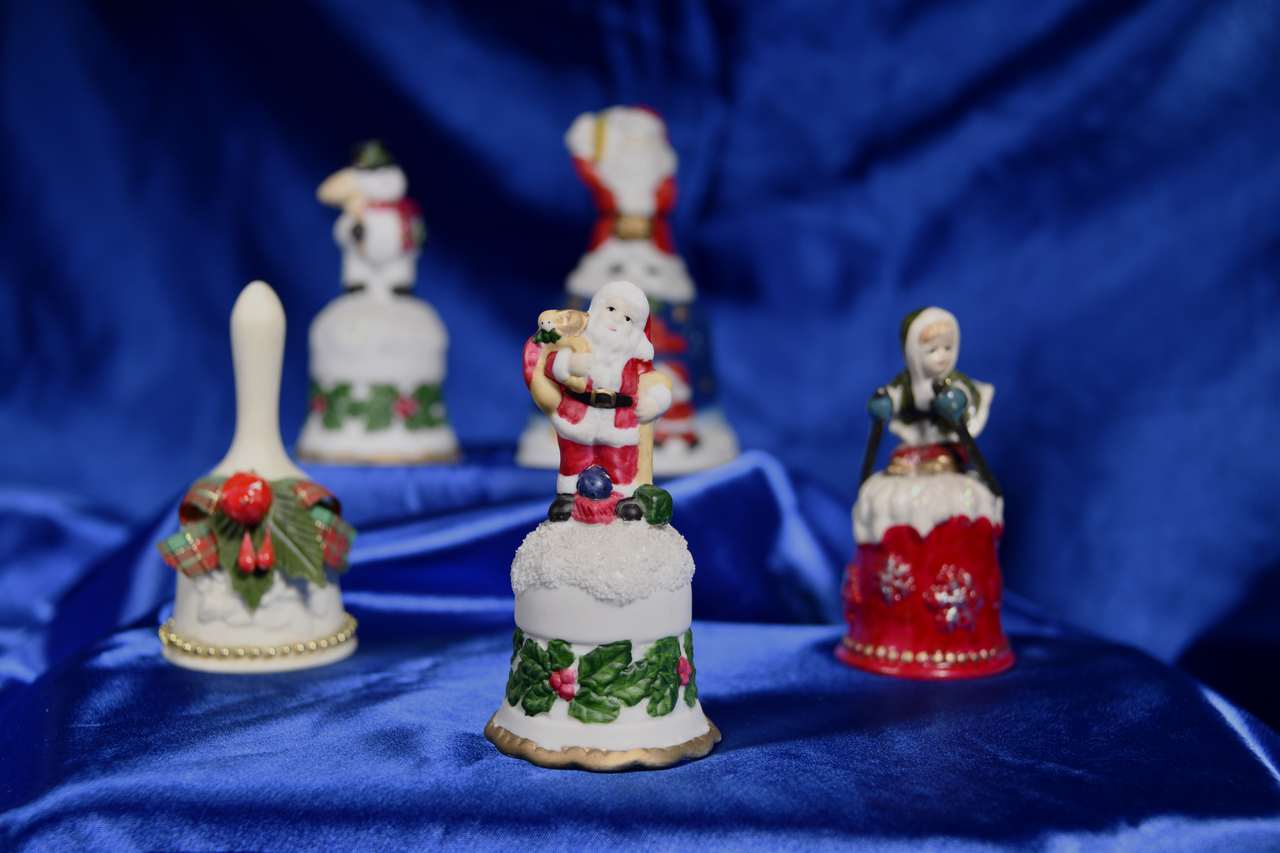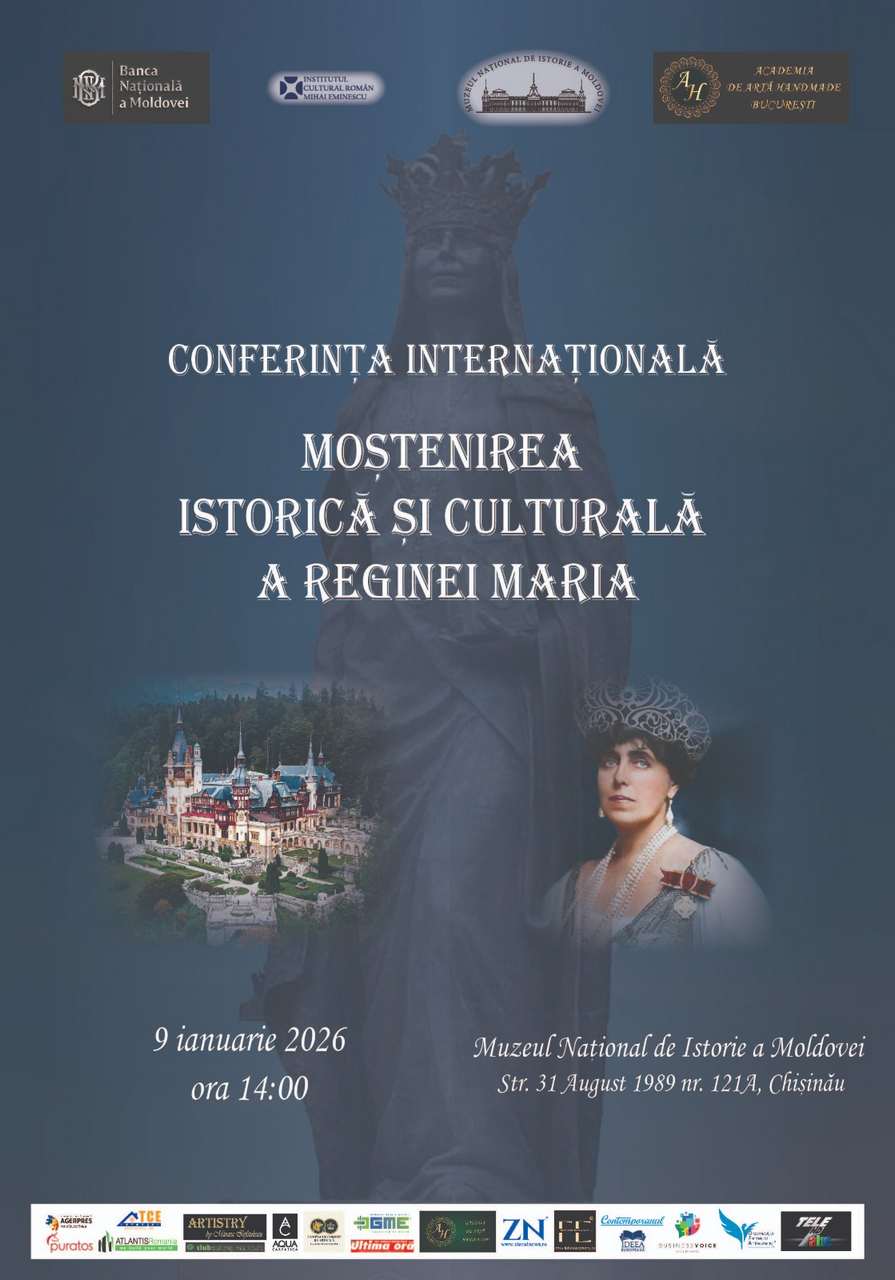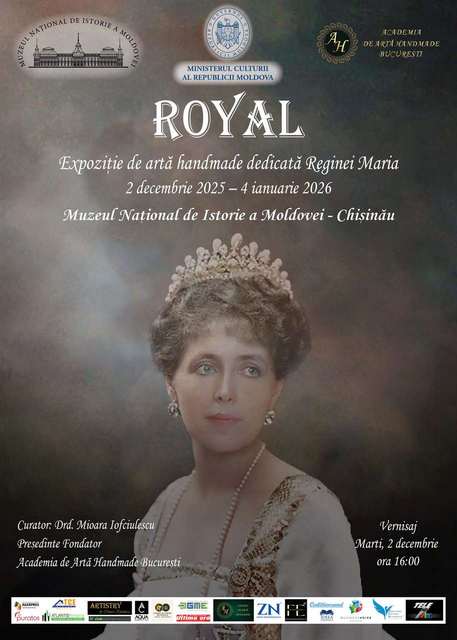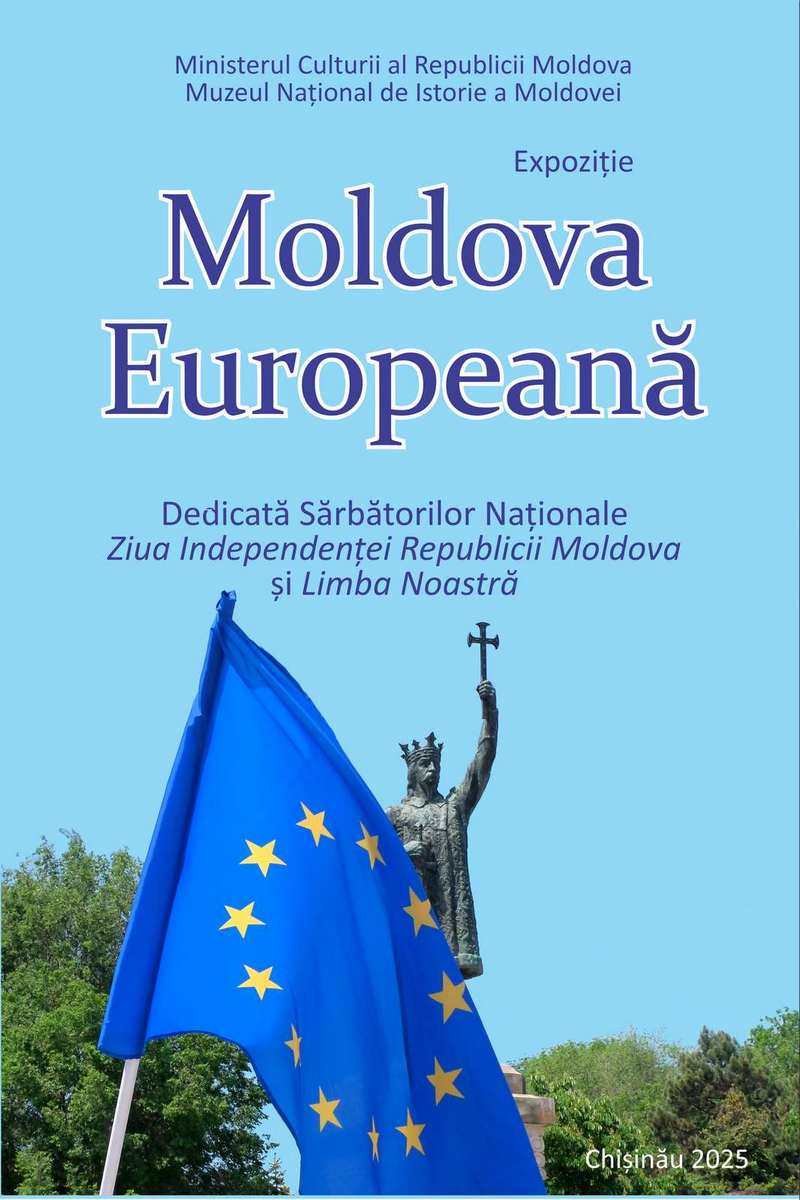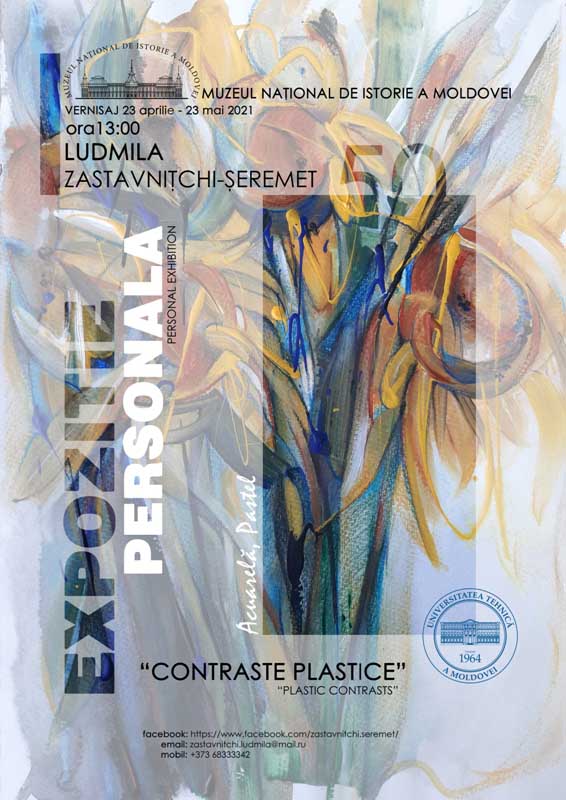
On the 50th anniversary of the university lecturer at the Faculty of Textiles and Printing from the Technical University of Moldova, Ludmila Zastavniţchi-Şeremet, opens a personal painting exhibition at the National Museum of History of Moldova, the title "CONTRAST ARTS", which includes over 30 works, in the technique of watercolour (2020-2021) and pastel (made in 2011 dedicated to the Cubist style). The works represent the freedom of water colours on canvas or paper, the effect, the fluidity, the spontaneity of colours, the pictorial gesture that inspires the sensation of creating as many works as possible. The author is an admirer of nature, flowers, traditional objects, stylized by shapes, lines, colour, with major impact in the compositions of the works presented.
Visual artist, university lecturer at the Technical University of Moldova (1995-present), member of the Union of Visual Artists of the Republic of Moldova (since 2007), Ludmila Zastavniţchi-Şeremet was born on April 3, 1971, Sângerei, Republic of Moldova. Graduate of the State Pedagogical University "Ion Creangă" Faculty of Fine Arts and Design (1991-1995), master's degree in "Industrial Design", Faculty of Light Industry, UTM (1999-2000). The author released the painting album in 2013 and participated on TV programs with N. Canțer, the TV show "Atelier". Her works are exhibited in the classrooms of the faculty where she works, at private collections in the USA, Germany, Romania, Russia, Moldova.
Frequent participant since 2000 on the group national and international exhibitions of Union of Visual Artists of Moldova, such as "Spring Salons" "Autumn", "Salons of Moldova" Chisinau-Bacau, Romania, "C. Brâncuşi" exhibition centre in Chisinau, Salon of Teachers of Visual Arts in Chisinau Moldova.
First personal painting exhibition was organized at the exhibition centre "C. Brâncuși" Chisinau, R. Moldova (2008), then at the National Library (2008), Municipal Library "B. - P. Hasdeu" in Chisinau (2010), at the Art Gallery "Atrium" Chisinau (2013), French Alliance of Moldova (2015).
Author's nominations "Autumn 2010", "Saloons of Moldova 2012".
The exhibition will be displayed in the lobby on the floor of the National Museum of History of Moldova between April 23 and May 23, 2021.
The opening will be made online on April 23, 2021, at 13.00, on the museum's Facebook page.











 31 August 1989 St., 121 A, MD 2012, Chisinau, Republic of Moldova
31 August 1989 St., 121 A, MD 2012, Chisinau, Republic of Moldova



